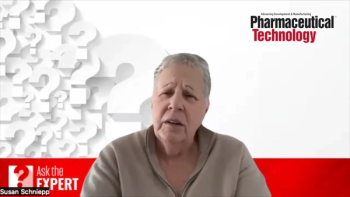
Senate FDARA Approval Moves PDUFA to the House
Following the US Senate approval of the FDA Revitalization Act (FDARA, S.1082) in May, the debate over drug safety and the reauthorization of the Prescription Drug User Fee Act (PDUFA) now moves to the House.
Following the US Senate approval of the FDA Revitalization Act (FDARA, S.1082) in May, the debate over drug safety and the reauthorization of the Prescription Drug User Fee Act (PDUFA) now moves to the House. The House is prepared for this debate; its Energy and Commerce Committee has been holding a series of hearings on drug safety, user fees for drugs and medical devices, follow-on biologics, and food safety in hopes of final deliberations by the end of June.
FDA officials had hoped to see final reauthorization of PDUFA by the end of June, before the agency is obliged to send out pink slips to many drug review staffers informing them that they may lose their jobs if Congress fails to renew user fees before the September 30 expiration date. Although all sides expect a user fee bill will be approved this year, final deliberations could move into the fall if drug reimportation and generic drug issues create an impasse.
The Senate Health, Education, Labor, and Pensions (HELP) Committee has promised to complete work on legislation establishing a pathway for follow-on biologics. That could be included in the larger FDA measure during House–Senate negotiations on a final bill.
Senate HELP Committee chairman Edward Kennedy (D-Mass) and ranking Republican Mike Enzi (Wyo) avoided stalemate in the Senate by engineering compromises over a number of controversial amendments. The most prominent was an effort by Democrats to add a measure permitting drug importing from Canada. The White House has threatened to veto such a measure, prompting Kennedy to back a second amendment that basically eviscerates the import measure by permitting drug imports only if FDA determines that such drugs are safe and will cut costs for Americans.
The final Senate bill is a massive piece of legislation; including provisions to ensure food safety and to renew medical device user fees that were added in during final deliberations. The bill also renews pediatric research incentives and requirements, but reduces exclusivity to three months for drugs with sales over $1 billion. Just before moving to the Senate floor for approval, Kennedy and Enzi agreed to moderate some of the earlier drug safety provisions, namely to require a special risk evaluation and mitigation strategy (REMS) only for those new drugs found to have serious adverse events during clinical trials or postapproval. The final bill also drops a two-year ban on direct-to-consumer (DTC) advertising for new drugs, opting instead for required presubmission of planned ads and stiff fines for marketers that run false and misleading promotions.
One late change to the bill doubles maximum fines to $2 million for violations of safety provisions. The Senate also approved provisions to curb abuses of citizens’ petitions to delay generic drug marketing and to encourage development of new antibiotics and therapies to treat neglected diseases.
A main theme of the legislation is to strengthen FDA’s authority to manage the full drug lifecycle, as opposed to preapproval testing and controls. The bill makes it easier for FDA to require label changes and postapproval studies and requires posting information on ongoing clinical trials and study results. A major thrust is to greatly expand FDA’s electronic information systems for evaluating adverse events and expanding its capacity to detect signals of safety problems for marketed medicines.
The final bill increases drug user fees by $25 million (on top of the $443 million fees for 2008) to support additional drug safety requirements, with further increases in subsequent years. Just how FDA would assess the added fees remains uncertain and will be a key issue to be fleshed out with the House.
Despite the increased user fees, FDA will need a considerable expansion in appropriated funding to accomplish all the new tasks outlined in the legislation. FDA advocates seek $2 billion in appropriated funds for next year, in addition to more than $500 million in user fees, but it will be a tough fight to gain such an increase.
Newsletter
Stay at the forefront of biopharmaceutical innovation—subscribe to BioPharm International for expert insights on drug development, manufacturing, compliance, and more.




